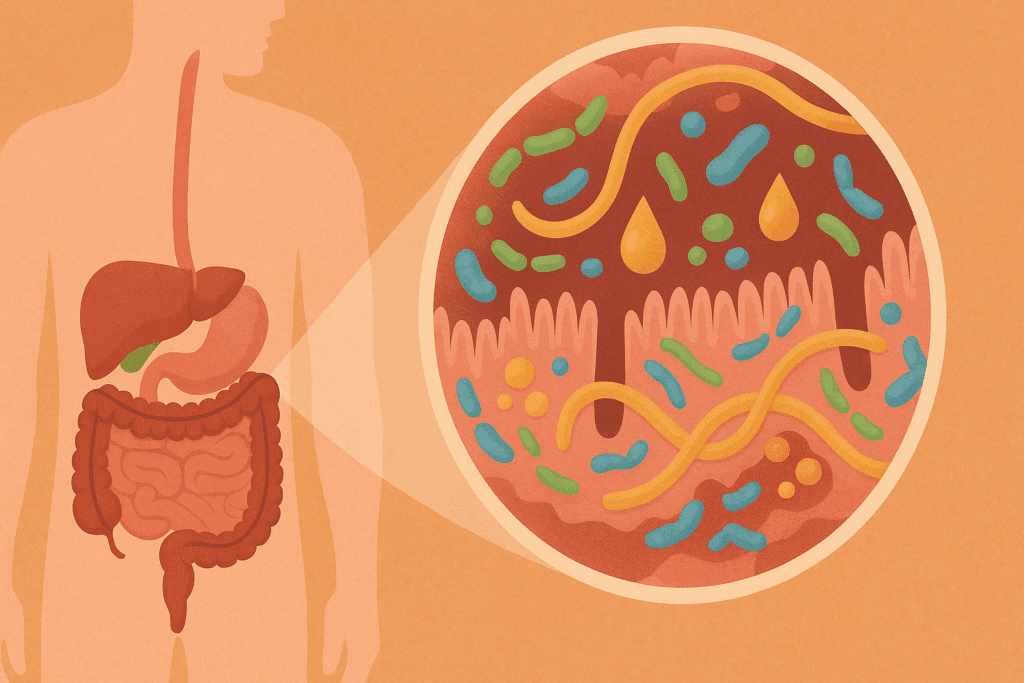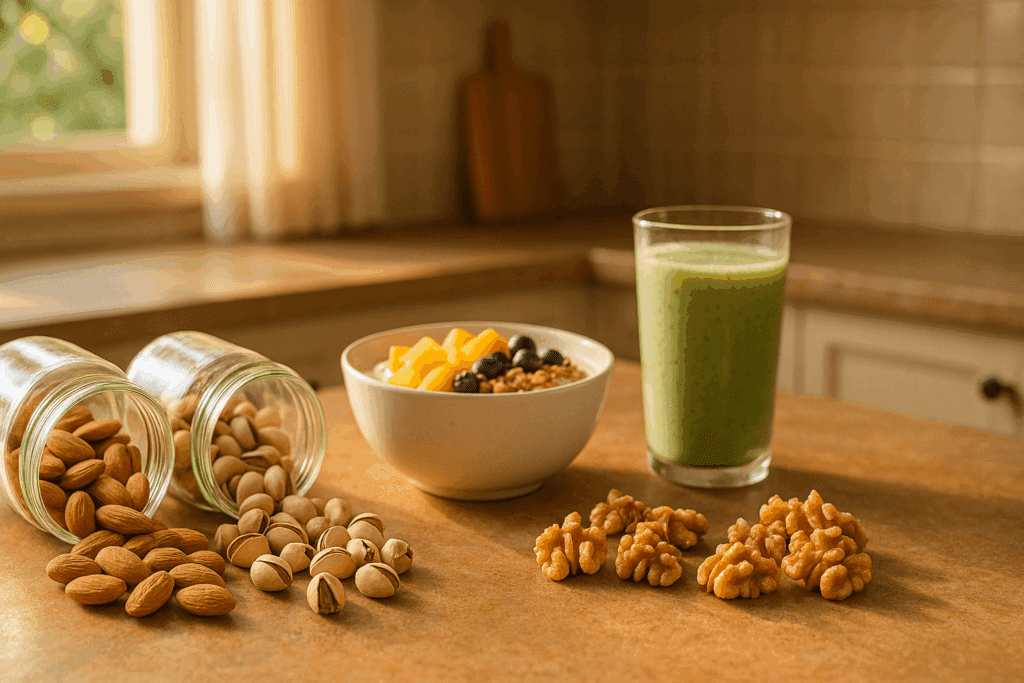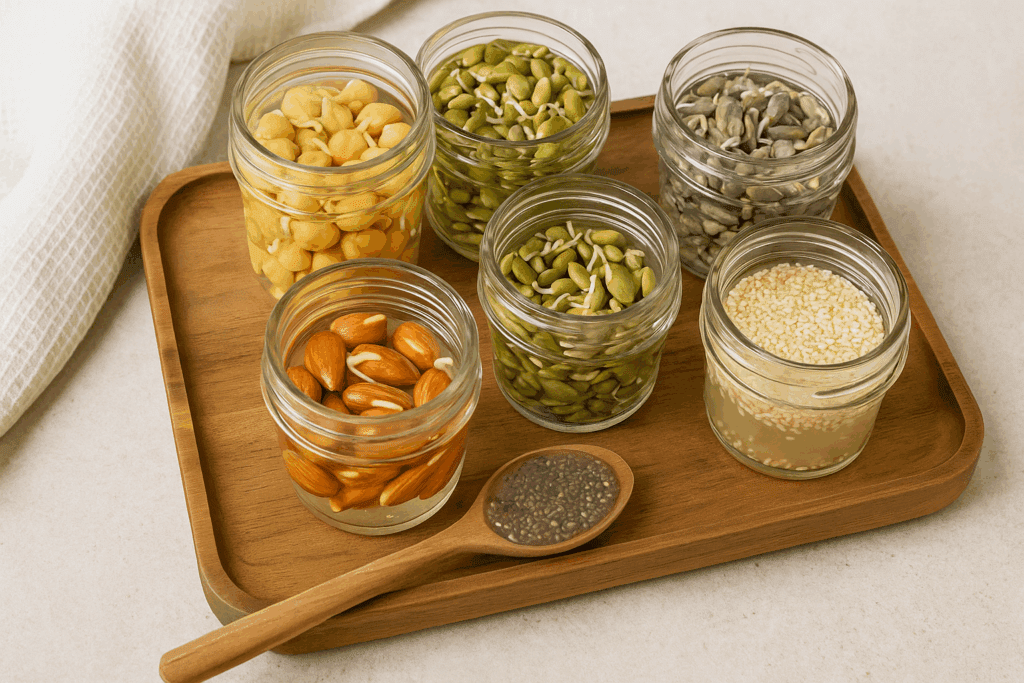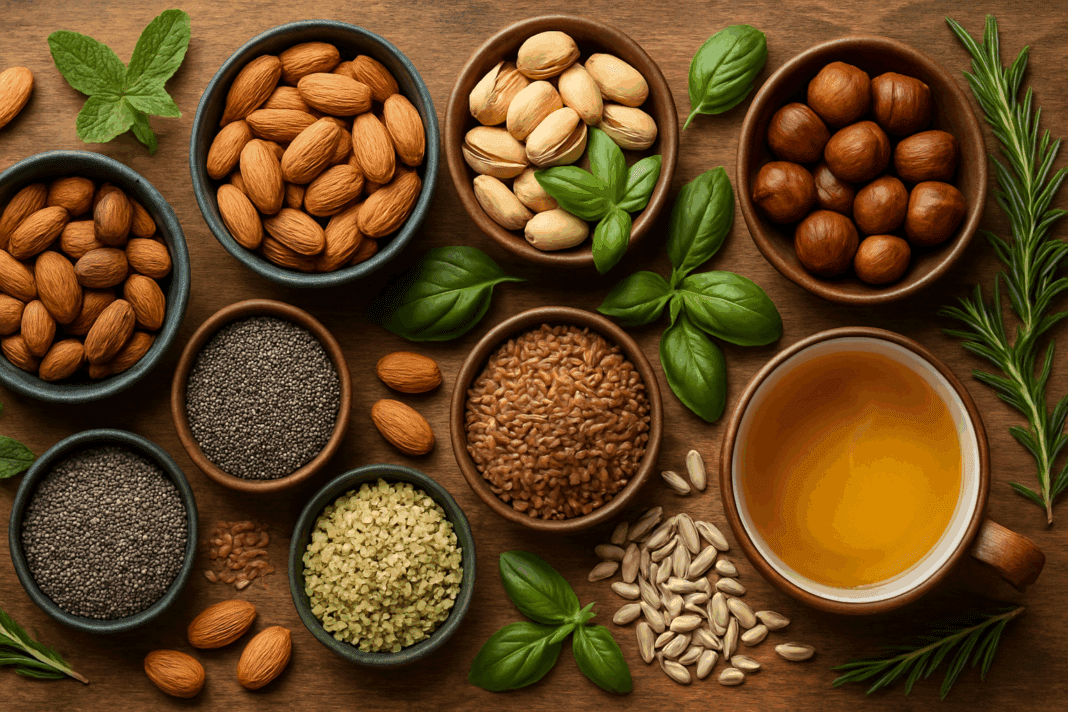Introduction: Understanding the Role of High Fiber Nuts in Digestive Health
High fiber nuts are not only delicious and convenient but also remarkably beneficial for your digestive system. As awareness grows about the connection between gut health and overall well-being, these nutritional powerhouses are increasingly gaining recognition as holistic staples for maintaining a healthy digestive tract. Unlike refined snacks or processed foods that may harm the gut microbiome, nuts and seeds provide essential dietary fiber, healthy fats, and micronutrients that nourish the beneficial bacteria in your intestines. This guide aims to explore the importance of incorporating high fiber nuts and seeds into your daily routine, focusing on how these natural foods support digestive wellness from a holistic and evidence-based perspective.
Dietary fiber plays a critical role in promoting regular bowel movements, preventing constipation, and supporting the diversity of the gut microbiota. Among the plant-based sources of fiber, nuts and seeds offer a unique combination of soluble and insoluble fiber, along with other gut-supporting compounds like polyphenols and omega-3 fatty acids. This makes them an ideal choice for individuals seeking both convenience and comprehensive gut health support. From almonds and chia seeds to pistachios and flaxseeds, we will delve into the specific benefits and fiber content of different varieties while emphasizing how their consumption aligns with principles of functional nutrition.
Throughout this article, we will also address common questions such as “do nuts have fiber,” “are almonds high in fiber,” and “how much fiber is in nuts,” helping readers make informed choices. By the end, you will have a deeper understanding of why these foods belong in your gut-friendly diet and how to integrate them effectively. The journey through high fiber nuts and seeds begins with understanding the science behind fiber and its profound impact on gastrointestinal health.
You may also like: The Ultimate Guide to Gut Healthy Meals: Best Meals for Gut Health and Nourishing Recipes You’ll Love

What Makes Dietary Fiber So Essential for Gut Health?
Dietary fiber is a non-digestible carbohydrate found in plant-based foods, and it is vital for maintaining the integrity and function of the digestive system. There are two main types of fiber: soluble and insoluble. Soluble fiber dissolves in water and forms a gel-like substance that helps slow digestion, regulate blood sugar, and lower cholesterol. Insoluble fiber, on the other hand, adds bulk to stool and facilitates its movement through the intestines, preventing constipation and promoting regularity. When consumed in balanced amounts, both types contribute to a healthier digestive process.
In the context of gut health, fiber’s most profound effect lies in its ability to act as a prebiotic. Prebiotics are compounds that serve as food for probiotics—the beneficial bacteria that reside in the gut. When these microbes ferment dietary fiber, they produce short-chain fatty acids (SCFAs) like butyrate, acetate, and propionate, which play essential roles in maintaining the gut barrier, reducing inflammation, and regulating immune function. SCFAs are particularly important for preventing leaky gut syndrome and other gastrointestinal disorders.
Another benefit of dietary fiber is its role in improving satiety and aiding weight management, which in turn supports gut health. Excess body weight is linked to higher levels of inflammation and dysbiosis—an imbalance in the gut microbial ecosystem. Therefore, high fiber foods like nuts and seeds can contribute to a virtuous cycle of health by supporting metabolic function while nourishing the gut microbiome. As we’ll see, the fiber in nuts is particularly well-suited for achieving these effects due to its nutrient density and versatility.

High Fiber Nuts and Their Impact on Digestive Wellness
Among the most compelling reasons to include nuts in your diet is their contribution to your daily fiber intake. High fiber nuts like almonds, pistachios, and hazelnuts offer an effective and tasty way to enhance digestive function. For instance, just one ounce of almonds contains approximately 3.5 grams of fiber, making them one of the most fiber-rich nuts available. Pistachios are another strong contender, delivering over 2.9 grams of fiber per ounce while also supplying important antioxidants and phytochemicals that further benefit gut flora.
One might wonder, “are nuts a good source of fiber?” The answer is a definitive yes. Not only do they contain both soluble and insoluble fiber, but they also offer other nutrients like vitamin E, magnesium, and healthy monounsaturated fats, all of which contribute to intestinal integrity and overall gastrointestinal function. Fiber in nuts acts synergistically with these nutrients, reinforcing their beneficial effects and offering a complete package of gut-supportive properties.
In addition to promoting regularity, high fiber nuts have been shown in research to improve the composition of gut bacteria. For example, studies have found that individuals who regularly consume nuts like walnuts and pistachios experience increases in butyrate-producing bacteria, which are known to have anti-inflammatory and colon-protective effects. This microbiome modulation is not only beneficial for digestive health but also contributes to enhanced immune function and reduced risk of chronic diseases.
Therefore, when evaluating “do nuts contain fiber” or “are nuts good fiber,” it becomes clear that their benefits go beyond just fiber content. The complex matrix of nutrients found in nuts makes them a holistic supplement to any gut-supportive dietary plan. To further understand their role, let’s look at some of the specific types of nuts that stand out for their fiber content and their therapeutic implications.

Nuts with Highest Fiber: Choosing the Best for Your Gut
When it comes to optimizing fiber intake, not all nuts are created equal. Certain varieties provide a significantly higher amount of fiber, making them more suitable for individuals looking to improve gut function and regularity. Among the top contenders in the category of “nuts with highest fiber” are almonds, pistachios, hazelnuts, and pecans. Each of these has a distinct nutritional profile and offers unique advantages for digestive health.
Almonds, often praised for their heart-healthy properties, also shine in terms of fiber content. With about 3.5 grams of fiber per ounce, they are frequently referenced in discussions about “how much fiber in nuts” and “are almonds high in fiber.” Their fiber, along with polyphenols and plant sterols, supports not only bowel function but also microbial diversity. Almonds have also been shown to increase levels of bifidobacteria and lactobacilli in the gut, both of which are beneficial strains linked to improved digestion and immunity.
Pistachios rank just behind almonds in terms of fiber, but their benefits extend even further due to their high antioxidant content and a unique blend of prebiotic fibers. Clinical studies suggest that pistachios may enhance the population of SCFA-producing bacteria in the colon, which in turn helps maintain the mucosal lining of the gut and reduces the risk of inflammatory bowel conditions. Moreover, their relatively low calorie density makes them a satiating snack that supports weight management, a key factor in gut health.
Hazelnuts and pecans round out the list of fiber-rich options. Hazelnuts offer about 2.7 grams of fiber per ounce, along with folate and manganese, which support cellular function and metabolic processes. Pecans provide slightly less fiber at around 2.6 grams per ounce but contribute an abundance of antioxidants, including ellagic acid and tocopherols, which protect the intestinal lining from oxidative damage. Collectively, these nuts exemplify why a diverse selection of high fiber nuts can provide comprehensive benefits for digestive and systemic health.

Frequently Asked Questions About High Fiber Nuts and Seeds
What Are Some Lesser-Known High Fiber Nuts That Support Gut Health?
Beyond the well-known varieties like almonds and pistachios, a few lesser-known high fiber nuts can provide excellent digestive benefits. Brazil nuts, for example, offer a respectable amount of nuts dietary fiber along with selenium, a trace mineral that helps modulate gut inflammation. Macadamia nuts, although lower in overall fiber compared to others, contain healthy monounsaturated fats that support microbial balance. Chestnuts, unique among nuts for being low in fat but rich in fiber, can also be a surprising addition to a gut-supportive plan. Including a rotation of these lesser-known high fiber nuts may introduce different forms of fiber and antioxidants that help diversify the gut microbiome, which is essential for long-term gut resilience.
How Does the Preparation Method Affect the Fiber in Nuts?
Many people overlook how roasting, soaking, or sprouting can impact the fiber structure and bioavailability in nuts. While the total amount of fiber in nuts doesn’t dramatically change through roasting, high heat may degrade some sensitive polyphenols that support fiber fermentation in the colon. Sprouting and soaking, on the other hand, can increase the digestibility of nuts and make certain micronutrients more available, especially in seeds like sunflower or pumpkin. These methods may enhance the functional effect of fiber by reducing antinutrients like phytic acid, which otherwise hinder mineral absorption. For those with sensitive digestion, opting for soaked or sprouted nuts and seeds may offer a gentler and more bioavailable way to access the benefits of high fiber seeds and nuts.
Can High Fiber Nuts Help Manage Bloating and Gas?
In moderation, high fiber nuts can actually support relief from bloating and gas over time by helping rebalance the gut microbiome. However, introducing too many nuts too quickly, especially in people with existing gut sensitivity, can temporarily exacerbate these symptoms due to increased fermentation of fiber by gut bacteria. To avoid discomfort, it’s best to start with small servings and increase intake gradually. Certain varieties, such as pistachios and cashews, tend to be higher in fermentable carbohydrates, which may not suit everyone with IBS or FODMAP sensitivities. Nonetheless, when integrated strategically, these nuts can enhance butyrate production and reduce intestinal inflammation that contributes to chronic bloating.
Do Nuts Have Fiber That Varies Seasonally or by Region?
Interestingly, the fiber content in nuts can be influenced by growing conditions, including climate, soil health, and harvesting practices. While the changes are not typically drastic, certain batches of almonds or hazelnuts may show slight variations in their fiber profiles depending on whether they are grown organically, harvested early, or exposed to more sun. For example, almonds grown in Mediterranean climates may contain a slightly higher amount of fiber due to slower ripening, which enhances cell wall development. Additionally, post-harvest processing and storage may also affect the integrity of certain fiber types. This nuance emphasizes the importance of sourcing nuts from high-quality, ideally local or traceable producers who prioritize nutrient retention.
Are Almonds High in Fiber Compared to Other Plant-Based Foods?
Yes, almonds are quite competitive when compared to many plant-based sources of fiber. One ounce contains about 3.5 grams of fiber, placing them among the nuts with highest fiber per serving. While they don’t surpass legumes or chia seeds in total fiber content, their balance of fiber, healthy fats, and antioxidants makes them uniquely gut-friendly. Almonds also contain insoluble fiber concentrated in their skin, which helps add bulk to stool and supports regular elimination. When compared side-by-side with vegetables or fruits, almonds can be a superior snack option for individuals seeking dense, portable sources of plant-based fiber without excess sugar or starch.
How Much Fiber in Nuts Is Actually Fermented by Gut Bacteria?
The fermentability of fiber in nuts depends largely on the ratio of soluble to insoluble fiber and the individual’s microbiome composition. Soluble fiber, more prevalent in nuts like pistachios and cashews, tends to be more readily fermented into beneficial short-chain fatty acids. However, insoluble fiber, found in higher quantities in almonds and hazelnuts, also contributes by providing bulk and promoting peristalsis, even if it’s less fermentable. On average, around 20–30% of the fiber in nuts may undergo microbial fermentation. This rate can increase when nuts are consumed alongside high fiber seeds or prebiotic-rich foods, creating a synergistic effect that enhances bacterial diversity.
Are Nuts a Good Source of Fiber for Plant-Based Athletes?
Absolutely, nuts are an excellent addition to a plant-based athlete’s diet not only for protein and healthy fats but also for their dietary fiber. High fiber nuts like almonds, walnuts, and pecans help stabilize blood sugar and reduce post-exercise inflammation by supporting gut function. The nuts dietary fiber also slows gastric emptying, which can improve nutrient absorption when timed strategically. Moreover, fiber helps prevent the common issue of gastrointestinal distress among endurance athletes by reinforcing the integrity of the gut lining. When paired with high fiber seeds such as flax or chia, these combinations provide a holistic foundation for optimal athletic recovery and digestive balance.
Do Nuts Contain Fiber That Interacts with Medications or Supplements?
In certain cases, the fiber in nuts may interfere with the absorption of specific medications or fat-soluble supplements. For example, insoluble fiber may speed up transit time, potentially reducing absorption of medications that require extended digestion periods. Moreover, the healthy fats and oils in nuts may alter the way lipophilic (fat-soluble) drugs are metabolized. Those taking medications like levothyroxine or certain antibiotics should space out nut consumption by a few hours to ensure optimal absorption. However, this interaction is minimal for most people and can be managed easily through timing and awareness. It highlights the need for individualized dietary planning, especially in clinical or therapeutic contexts.
What Is the Difference Between Nuts Dietary Fiber and That Found in High Fiber Seeds?
Though both are excellent sources, the fiber profile in seeds and nuts differs in function and structure. High fiber seeds such as chia and flax contain more mucilage-forming soluble fiber, which supports satiety, blood sugar control, and gentle digestive motility. In contrast, nuts dietary fiber leans more heavily on insoluble fiber, promoting stool bulk and mechanical cleansing of the intestinal walls. Seeds also offer unique prebiotic compounds and higher levels of omega-3 fatty acids, particularly in flax and chia, which aid in reducing gut inflammation. Using both high fiber seeds and nuts together offers a synergistic approach to fiber diversity, ideal for comprehensive gut and metabolic health.
Why Are High Fiber Nuts Especially Important in Aging Populations?
As we age, the digestive system often becomes less efficient due to slower motility, reduced enzyme production, and shifts in the gut microbiota. High fiber nuts help counteract these changes by stimulating digestion and supporting microbial diversity in a way that aligns with the needs of older adults. The combination of fiber, antioxidants, and anti-inflammatory compounds found in nuts with highest fiber can reduce the risk of age-related digestive issues like constipation, diverticulosis, and even colorectal cancer. Moreover, they provide essential nutrients like magnesium, B vitamins, and healthy fats that support not only digestion but also cognitive and cardiovascular function. Encouraging daily intake of high fiber nuts in older adults can be a simple yet profound intervention for healthy aging.
How to Maximize the Gut Benefits of High Fiber Nuts in Everyday Meals
To truly harness the digestive benefits of high fiber nuts, consistency and variety are key. Try incorporating them into meals at different times of the day—add crushed walnuts to oatmeal, mix pistachios into quinoa bowls, or top off roasted vegetables with slivered almonds. Combining high fiber nuts with fermented foods like yogurt or kefir can amplify probiotic activity, as the fiber acts as fuel for healthy gut bacteria. It’s also beneficial to eat nuts in their whole, unprocessed form rather than as heavily salted or sugar-coated snacks. Pairing them with high fiber seeds such as hemp or sunflower boosts fiber density while supporting a broader spectrum of gut flora. With mindful preparation, high fiber nuts can become a delicious cornerstone of your daily digestive wellness strategy.

Exploring High Fiber Seeds: Compact Yet Mighty Allies for Gut Health
While nuts often steal the spotlight in discussions about dietary fiber, seeds deserve equal attention for their potent gut-supporting properties. High fiber seeds like chia, flax, hemp, and sunflower seeds are compact nutritional powerhouses that can easily be integrated into meals and snacks. Their high fiber content, particularly soluble fiber, makes them excellent for feeding gut bacteria and promoting the production of SCFAs.
Chia seeds are among the highest in fiber, offering nearly 10 grams per ounce. Their mucilaginous texture when soaked makes them especially effective at forming a gel-like substance in the gut, which slows digestion and facilitates nutrient absorption. This property not only improves satiety but also helps maintain stable blood sugar levels—an important factor in metabolic and digestive health. Chia seeds also contain alpha-linolenic acid (ALA), a plant-based omega-3 that contributes to anti-inflammatory processes in the gut.
Flaxseeds, often included in functional nutrition protocols, provide about 8 grams of fiber per ounce and are rich in lignans—plant compounds with antioxidant and estrogen-modulating effects. Like chia, flaxseeds form a gel when hydrated, supporting bowel regularity and acting as a gentle laxative without harsh effects. They also contain mucilage, a type of soluble fiber that soothes the digestive tract and promotes the proliferation of beneficial gut bacteria.
Hemp seeds and sunflower seeds, while slightly lower in fiber, still contribute meaningfully to a fiber-rich diet. Hemp seeds offer about 1.2 grams per tablespoon and are a complete source of protein, making them ideal for plant-based diets. Their combination of insoluble fiber and healthy fats supports digestive motility and microbial balance. Sunflower seeds provide around 2.4 grams of fiber per ounce and are particularly rich in vitamin E, which has been linked to reduced gut inflammation and improved immune defense.
Together, high fiber seeds complement the benefits of nuts and enhance the overall fiber density of a diet. Their versatility in culinary applications—from smoothies and yogurts to baking and salads—makes them an effortless addition to gut-supportive nutrition plans.

